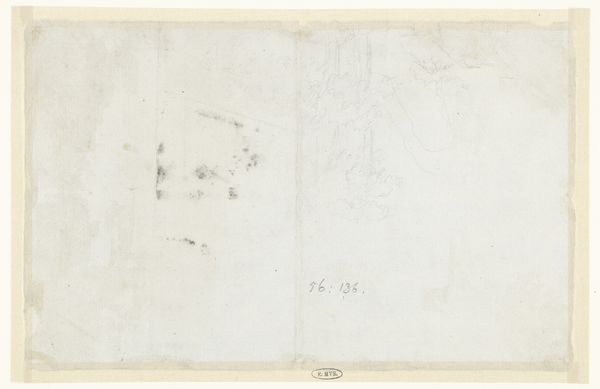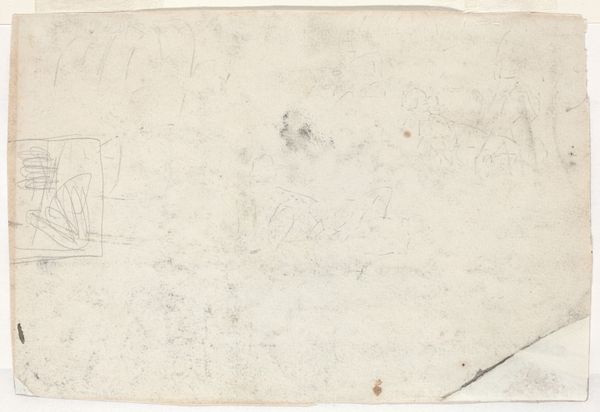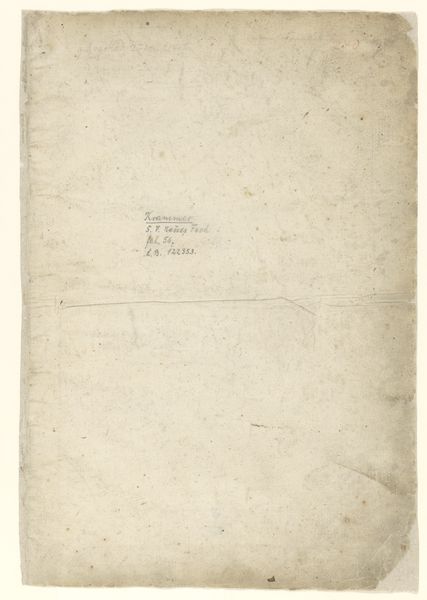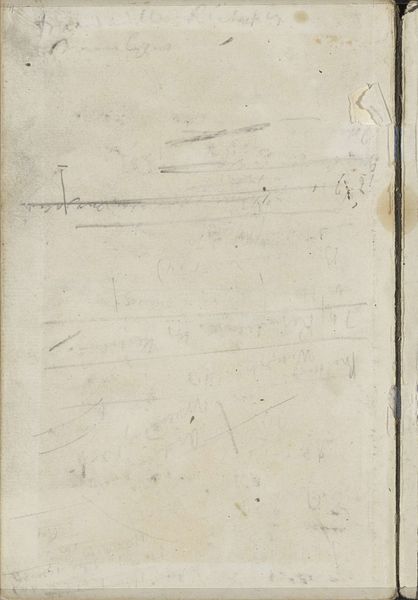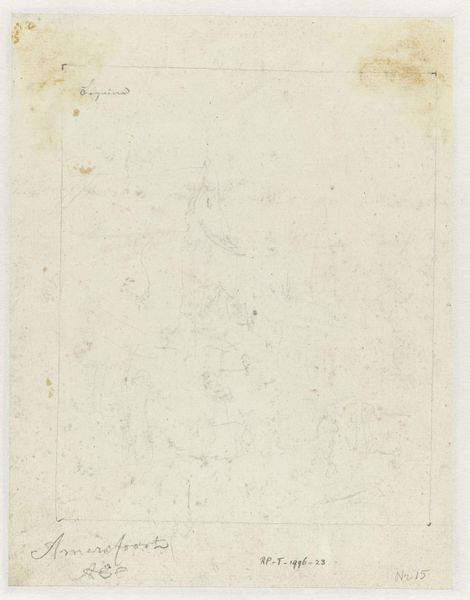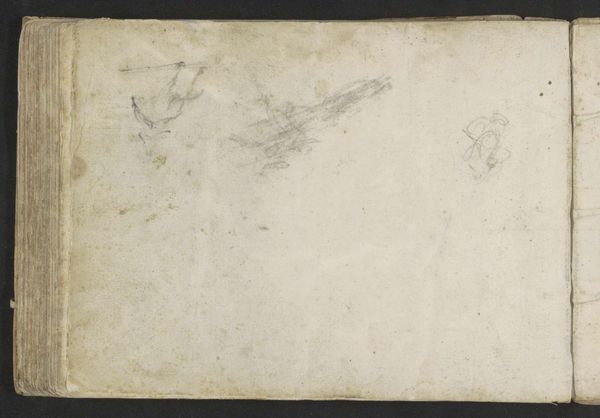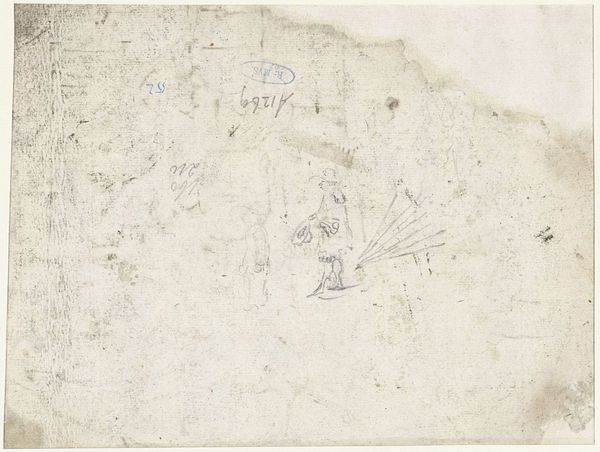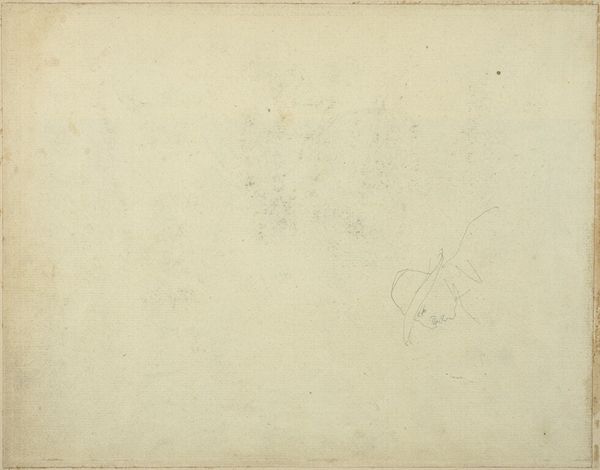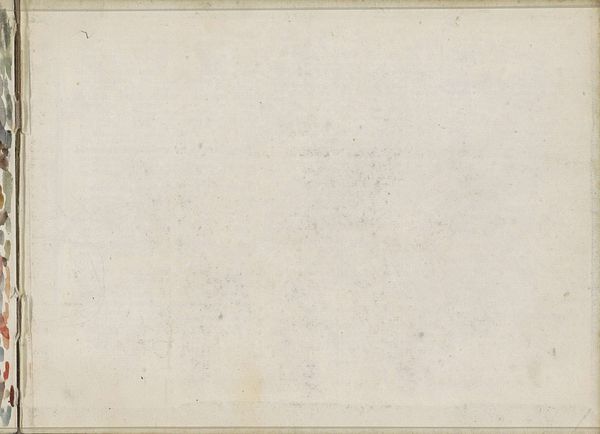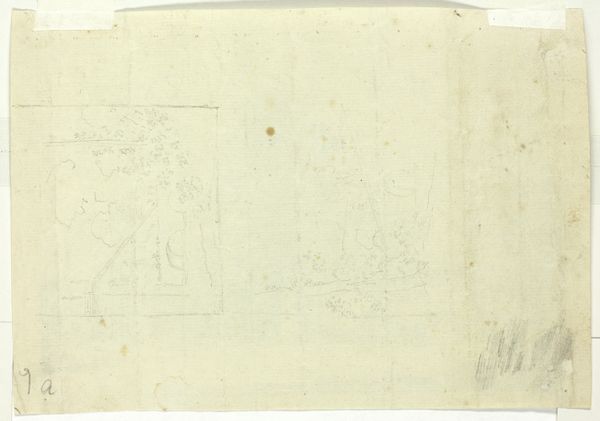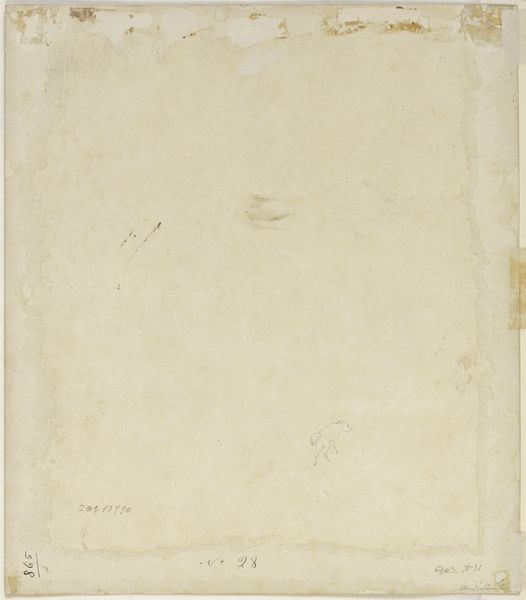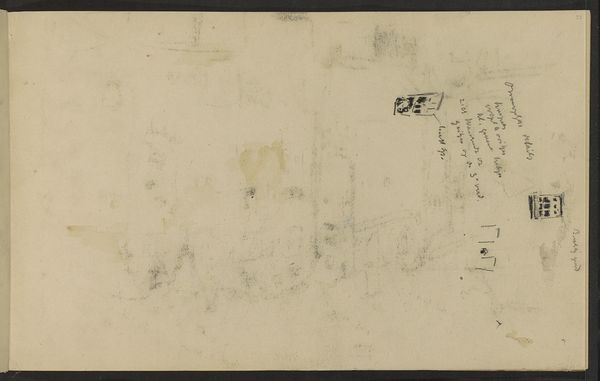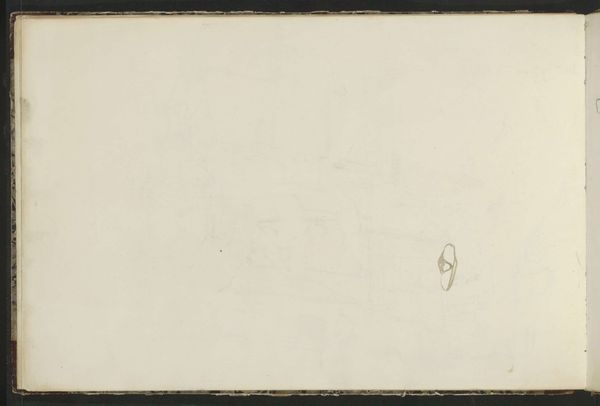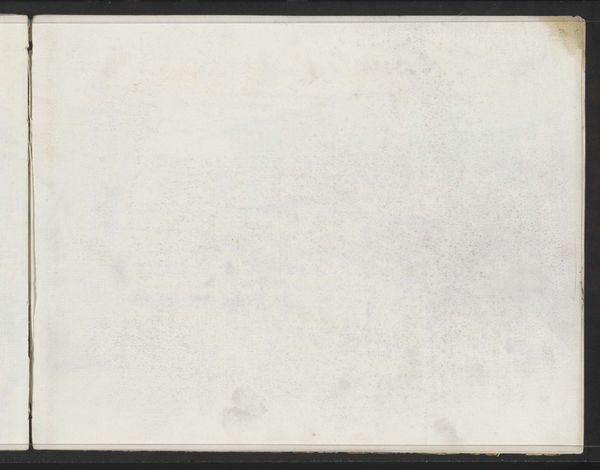
drawing, paper, pencil
#
drawing
#
neoclacissism
#
pencil sketch
#
landscape
#
paper
#
pencil
#
sketchbook drawing
#
academic-art
Dimensions: height 145 mm, width 220 mm
Copyright: Rijks Museum: Open Domain
Editor: This is "Paviljoen," a pencil and paper drawing created sometime between 1755 and 1819 by Pierre-Adrien Paris. It has such a gentle quality. What strikes me is how unfinished it feels, especially the empty space on the right. What do you see in this piece? Curator: That emptiness is deliberate. The pavilion nestled within the landscape isn't just a structure, but an emblem. This is neoclassicism. We're not simply seeing a building but an idea. It represents order, reason, perhaps even a longing for an idealized past. Editor: So the starkness contrasts with the busy details around the building, right? Curator: Precisely. The building almost organically grows into and out of that surrounding area. The Pavilion itself is grounded to Earth while at the same time stands independently of the environment from which it came. We are made to reflect on its place. And where do our thoughts wander? Do you feel the pull of history, the weight of empires, the beauty of architectural harmony? Editor: I do, actually. It’s not just a building; it’s a symbol, almost like a stage set for deeper contemplation, right? Curator: Indeed! The artist isn't just presenting a building. He presents us with its image so we understand its implications for memory and permanence. This pavilion transcends simple architecture. Editor: This makes me see how the symbolism really gives a certain emotion to the piece beyond just landscape and architecture, thanks! Curator: Glad I could share a way to help connect visual with feeling!
Comments
No comments
Be the first to comment and join the conversation on the ultimate creative platform.
